Skip store-bought and make Homemade Za’atar yourself! Dried thyme, sea salt, sumac and sesame seeds is all you need to whip up this homemade spice blend. It’s great in marinades, salad dressings and sprinkling onto of hummus. This recipe yields 5 tablespoons.
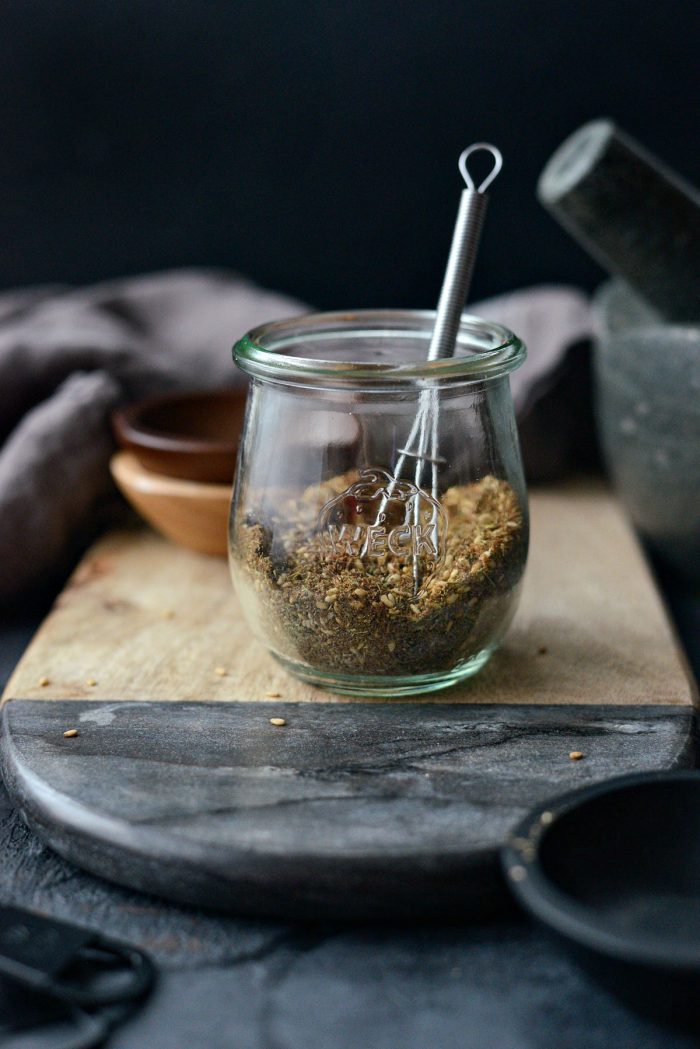
There’s a dozen or so ways you can prepare za’atar. There is the oh-so-convenient way via spice grinder. Or you could get an upper arm workout on your 18-ton mortar and pestle. And by 18-ton I really mean 8 pounds. It all feels the same.
This Middle Eastern spice blend tastes amazing in and on just about anything. If you haven’t tried it yet, what are you waiting for? One of my favorite ways to use za’atar is to mix it with olive oil and toss pita chips in just before baking, on top of hummus, tossed with veggies or use it to marinate chicken pieces and roast or grill until tender, juicy perfection. You get the drift. Google-search it and you’ll no doubt find a plethora of ways… or you could just wait and check back to this here blog in a few days.
Two Make This Homemade Za’atar You Will Need:
- dried thyme
- flaked sea salt
- ground sumac berries (dried)
- and sesame seeds
I’ve also seen herbs like oregano and savory used as well. But we’re sticking to the basics, man.
What Are The Best Spices For Making Your Own Seasonings and Spice Blends?
There’s no right or wrong brand. I will first say, buy what you can afford. However, not all spices are created equal as you tend to get what you pay for. Currently I use Morton & Bassett (not sponsored) because I find their spices to be top notch in texture, color and flavor. I love and respect what their company stands for not only with charitable work but also quality control. With that said some other wonderful brands I’ve used over the years are Simple Organic, Frontier Co-op and Penzys.
Place the 2 tablespoons dried thyme and 1 teaspoon flaked sea salt into your mortar. I found mine at HomeGoods for 12 bucks and I’ve had it for years!
Use the pestle, smashing and grinding the salt into the thyme until it’s nearly dust.
Next add the ground thyme and salt in a jar with 2 tablespoons sumac and 1-1/2 tablespoons toasted sesame seeds. I purchased my sumac at Penzy’s but it also can be found in specialty markets and online.
Finally stir to combine. That’s it!
I store this in an air-tight container for a couple of months at least. Glass is best and I use squatty jars with a tight fitting lid for all of my homemade spice blends.
What are your favorite ways to use za’atar? This inquiring mind wants to know!
For More Homemade Seasonings and Spice Blends Click Here!

Enjoy! And if you give this Homemade Za’atar recipe a try, let me know! Snap a photo and tag me on twitter or instagram!
Homemade Za'atar
Ingredients
- 2 tablespoons dried thyme
- 1 teaspoon flaked sea salt
- 2 tablespoons ground sumac
- 1½ tablespoons toasted sesame seeds
Equipment
- Bernardin Mason Jars - 250 mL - Wide
Instructions
- Add thyme and sea salt to your mortar, using your pestle to grind it finely.
- Add the ground thyme and salt with the sumac and toasted sesame seeds into a jar, stir to combine.
- Store in an airtight container for up to 2 months.
Buy the Cookbook: Simply Scratch : 120 Wholesome Homemade Recipes Made Easy Now available on Amazon »
THANK YOU in advance for your support!
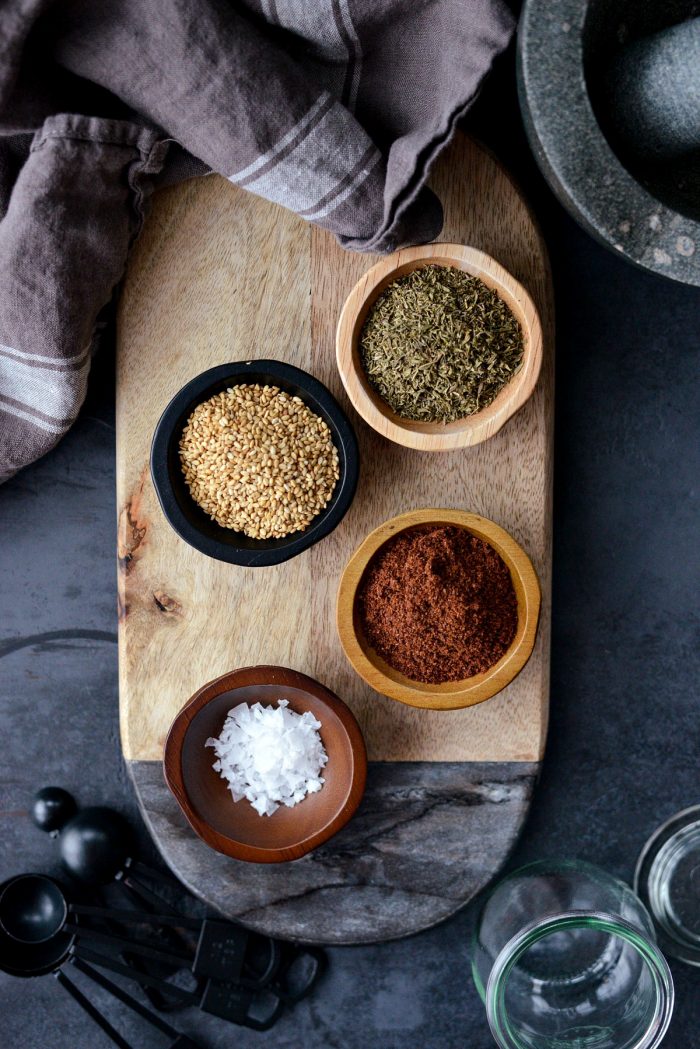
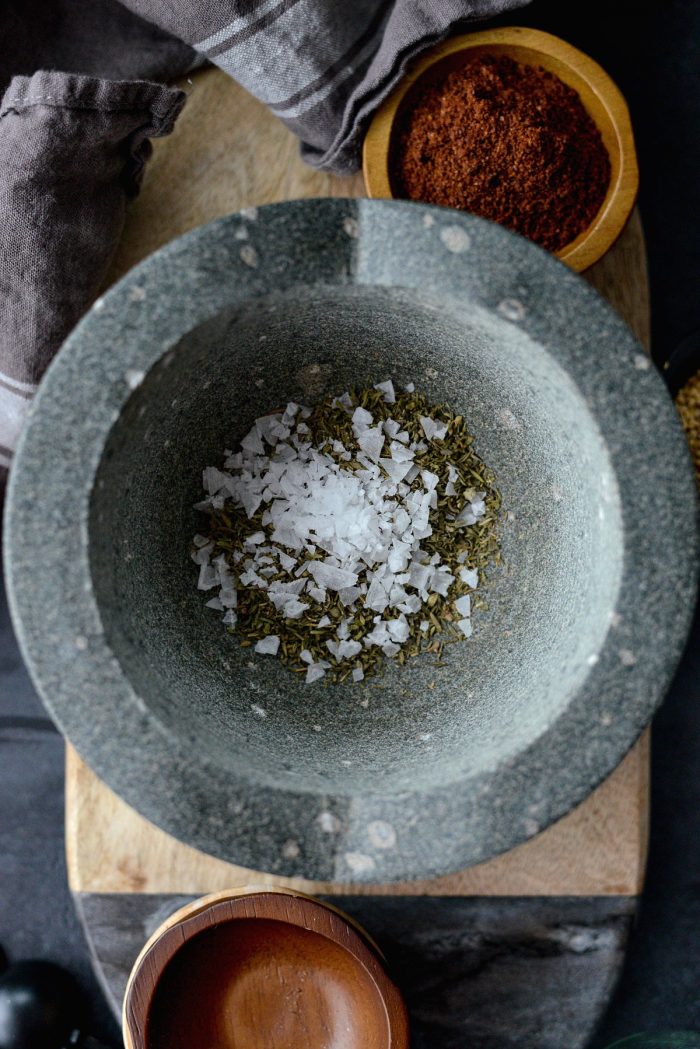
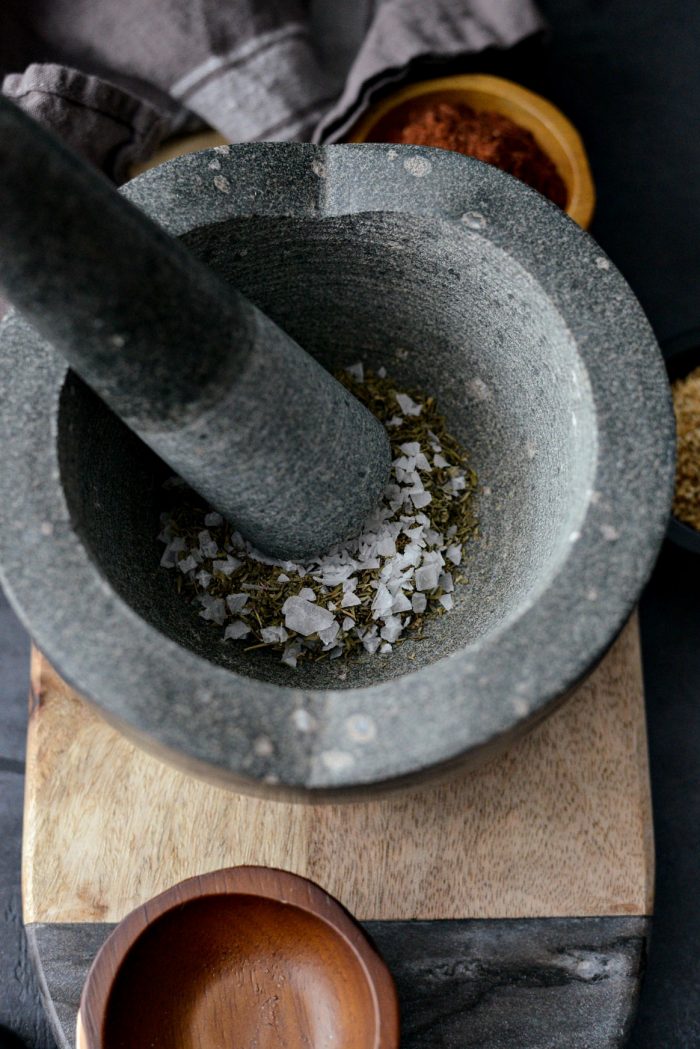
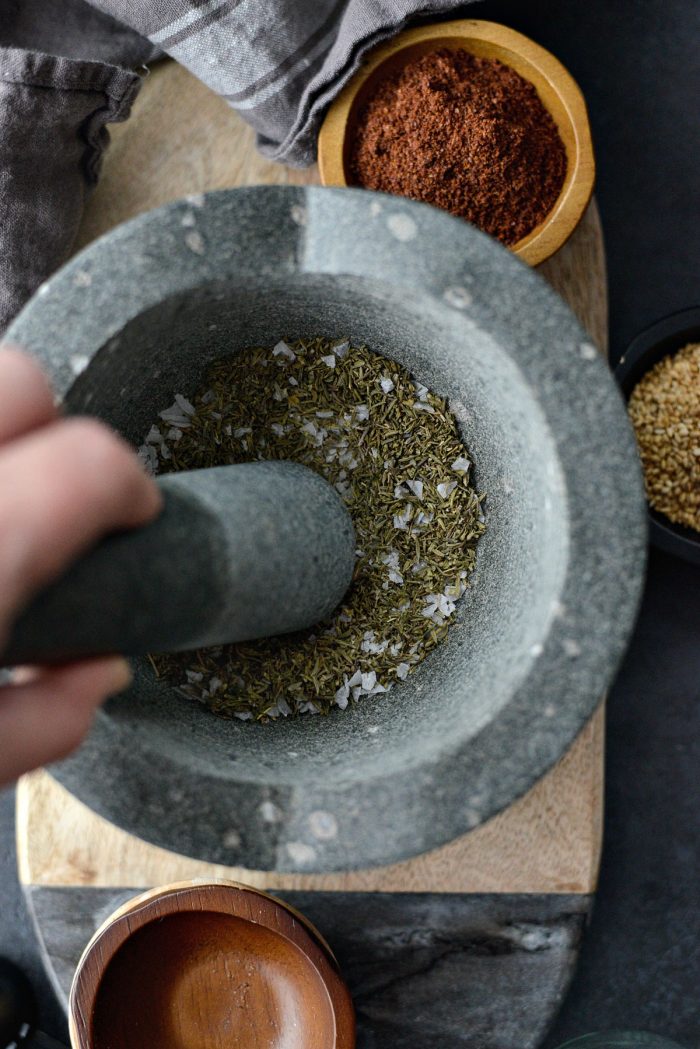
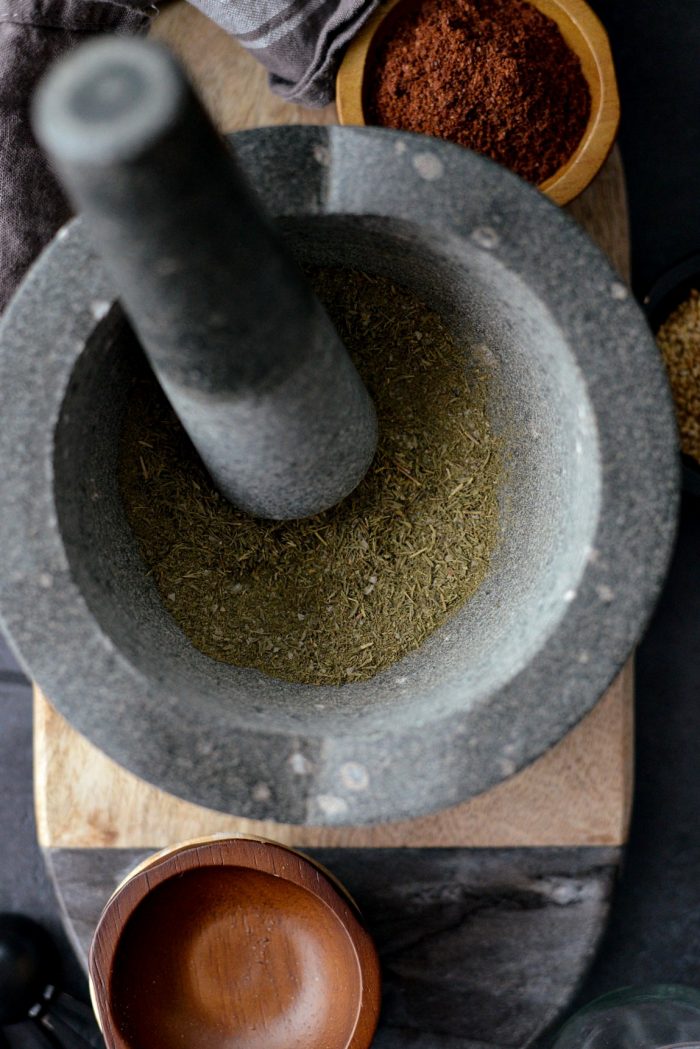
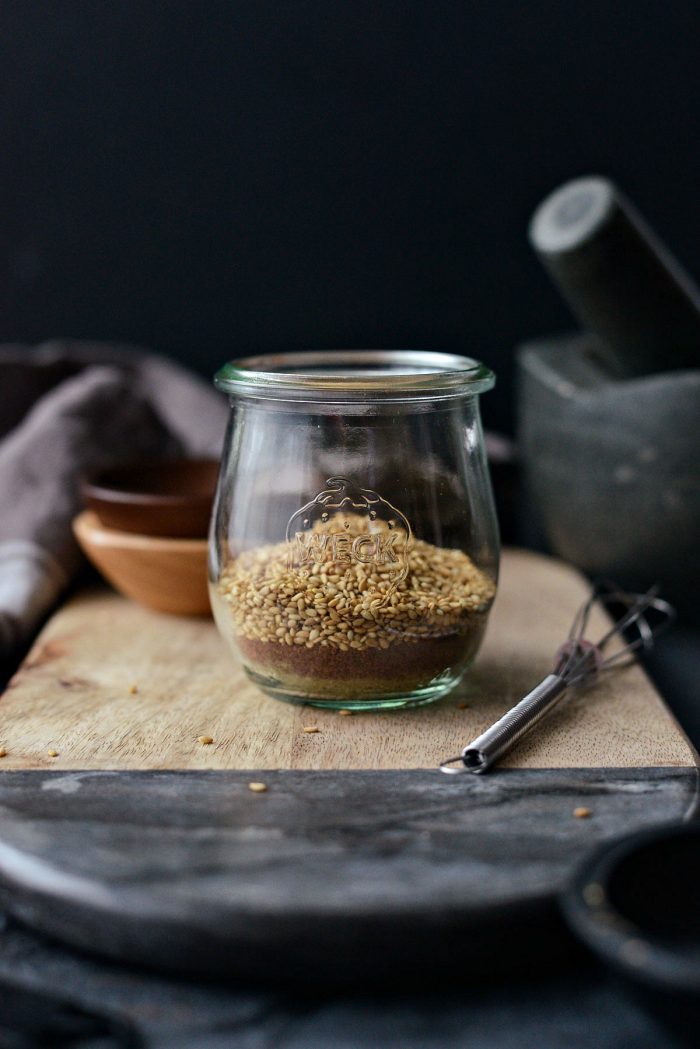
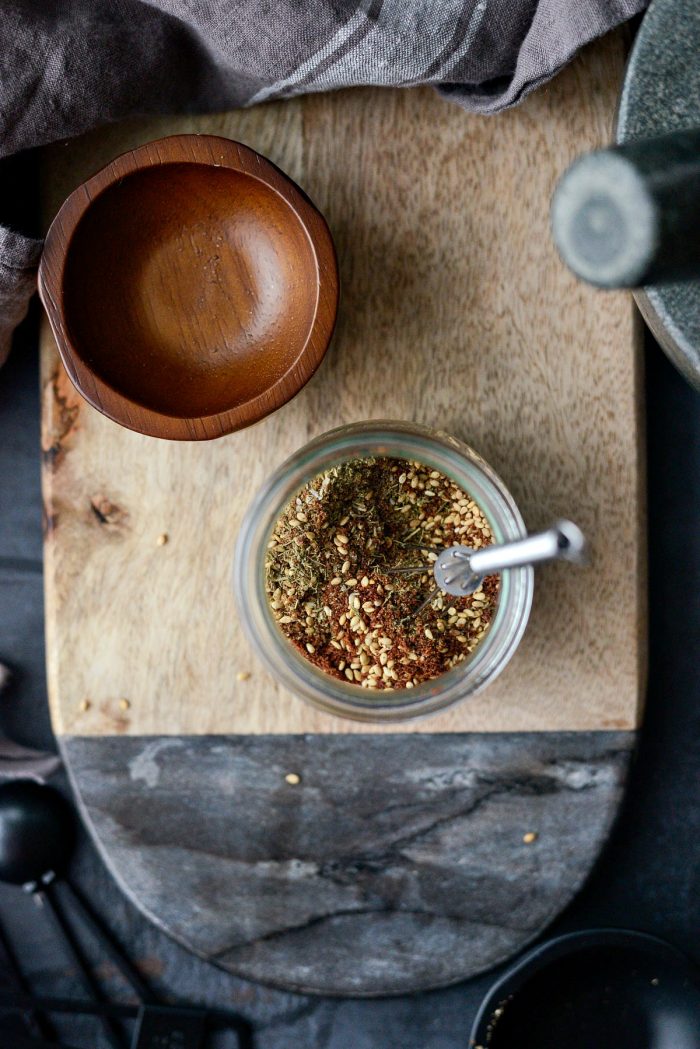
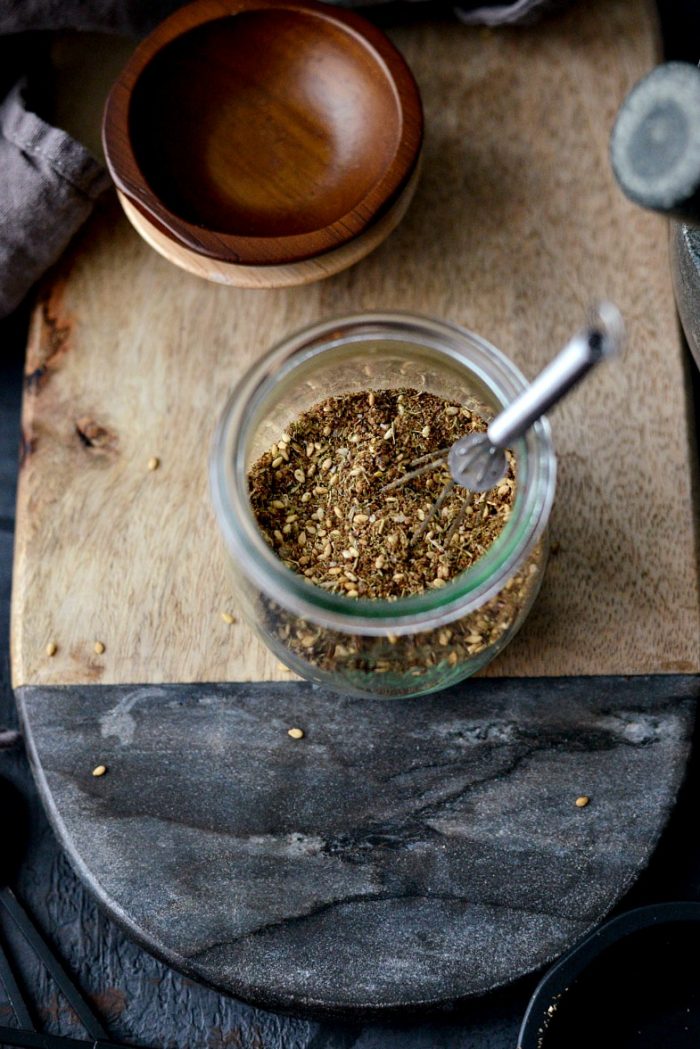
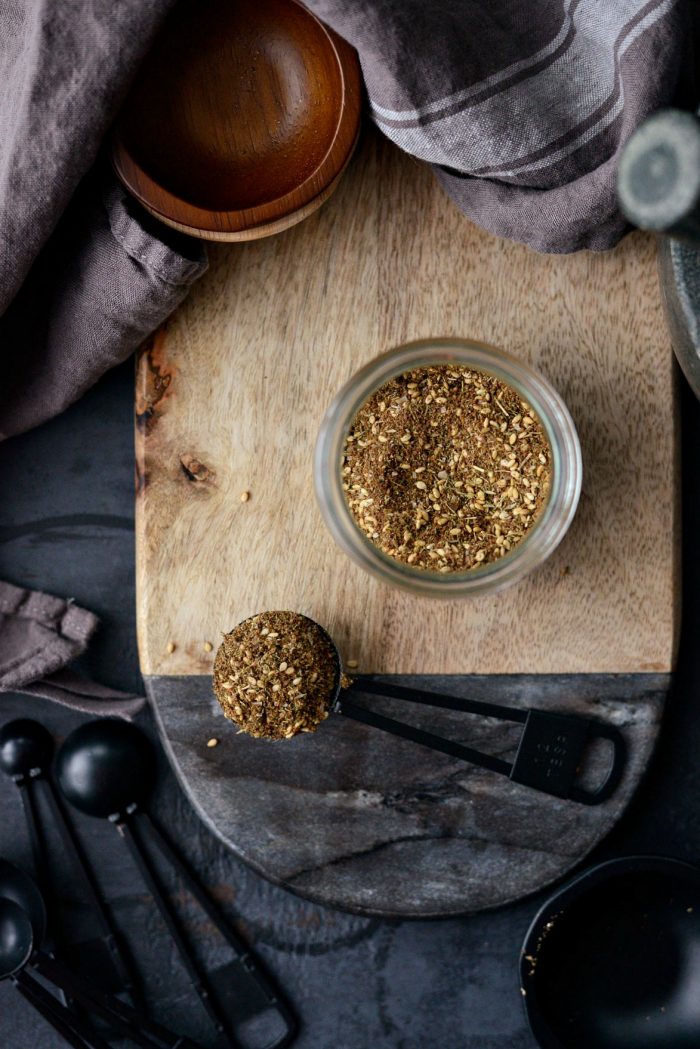




My most favourite way to use this is to mix it with bread dough ! It just takes bread to a whole other level. Semolina bread specially benefits from this spice 😀
Thanks for sharing this! It looks so pretty.
I have never tried Zaatar before. This makes me want to give to give it a whirl.
I so needed this recipe in my life! Can’t wait to try!
Looks like a great mix!
Kari
http://www.sweetteasweetie.com
My wife is Lebanese. Za’atar is a staple of Lebanese cuisine and so I know it well. We always have it in the house, but before now we’ve always purchased it pre-mixed. (Amazon lists a bunch.) In Beirut, there are storefronts where someone will prepare your favorite za’atar blend to order.
I have to say, your recipe nails it. My wife even says it corrects a problem she’s always had with the blends we’ve purchased: not enough sumac. There are only a few small changes or clarifications I would make.
1. When grinding the za’atar itself (thyme), sift it as you described first, then pulse it briefly in the spice grinder (assuming you use one) and sift again. Repeat until what comes out the bottom is dust. Don’t use the dust and throw away the remaining twigs. You want all the ingredients to be coarsely ground.
2. You’re making far too little at a time for the main uses of za’atar. It’s not really used as a spice, but as a major ingredient. I’ve been making batches using a half cup of each of three major ingredients and 4 tsp of salt. By the way, I use kosher salt. Don’t use table salt, or it will be too salty. You can use table salt if you reduce the amount of salt, but I’m not sure by how much.
3. Don’t buy supermarket thyme; actually, I’ve never tried it, but it certainly won’t be cost-effective and I’m not sure it’s exactly the same as the thyme sold on-line and in middle-eastern supermarkets as za’atar (not be confused with the use of the same term for the mixture of all the ingredients, per a recipe like yours).
Now, as to uses. Most uses involve mixing some quantity of the za’atar mixture with olive oil and stirring to a loose muddy consistency. For instance, start with about 3 tbs of the za’atar mixture and stir in the oil till it has the above consistency . (Actually, starting with the oil and adding the za’atar makes for easier mixing.)
Now you can use it with labneh, which is virtually the same as (unsweetened) whole-milk Greek yoghurt. Or buy a plain whole-milk yoghurt, pour it into a coffee filter and let it sit a few hours; keep what stays on top.
Typically, you’d spread lebneh onto a pita and top with the za’atar-oil mixture. This is the Lebanese cultural equivalent of a peanut-butter-and-jelly sandwich. It goes well with tomato, by the way, And it should have roughly equal proportions, with the lebneh taking the place of the peanut butter and the za’atar taking the place of the jelly.
For a multicultural experience, top a bagel and cream cheese with the za’atar-oil mixture.
You can top some freshly baked home-made pizza dough with lebneh and za’atar. Again, for these recipes, you tend to use quite a bit of za’atar mix, not as a spice, but as an ingredient.
Finally, I’m off the evil carbs these days, so my breakfast is often cottage cheese, sour cream, a little lebneh, topped with za’atar-oil mix. Here (as for its use when used to top hummus), you probably want to add more oil after you’ve added the za’atar-oil mix.
Enjoy!
Thanks for all the info, Peter! 🙂
Thank you so much for sharing! Definitely going to try this one! I love this recipe!
Enjoy!